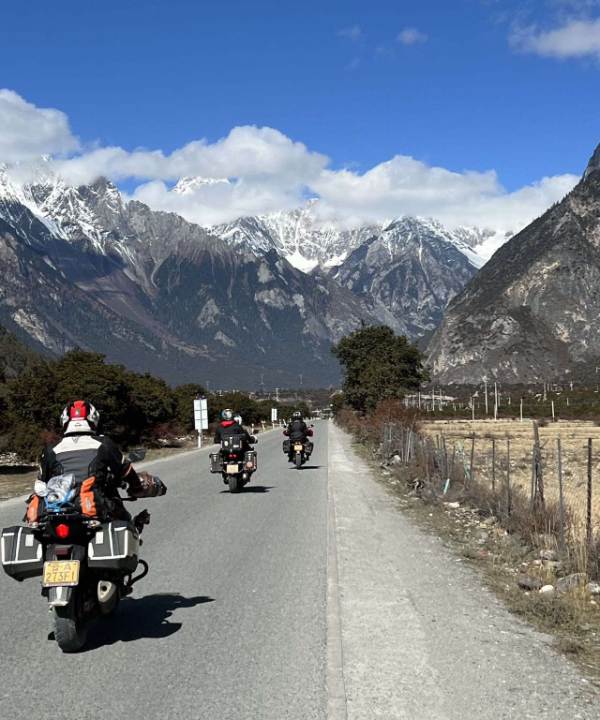
Tibet Travel Permit - Full Guide
Tibet, known for its mystical landscapes, rich culture, and spiritual history, is a dream destination for many travelers. However, due to its sensitive political status and unique geographic location, foreign visitors must obtain special permits to enter and travel within Tibet. If you’re planning a trip to this breathtaking region, it’s essential to understand the different types of permits required, how to obtain them, and the overall process. Here’s a comprehensive guide to Tibet Travel Permits to help you prepare for an unforgettable adventure.
What is a Tibet Travel Permit?
A Tibet Travel Permit (TTP), sometimes called an “Entry Permit,” is a mandatory document required for foreign nationals (non-Chinese passport holders) who wish to visit the Tibet Autonomous Region (TAR). Issued by the Tibet Tourism Bureau (TTB), this permit ensures that foreign travelers are allowed to enter and travel within the region under regulated conditions.
The TTP is just one of the permits required for traveling to Tibet. Depending on the places you want to visit and the activities you wish to engage in, additional permits may be necessary.
Who needs a Tibet Travel Permit ?
Foreign travelers, including citizens of all countries except China, must obtain a Tibet Travel Permit to enter and explore Tibet. Even those holding Hong Kong and Macau Special Administrative Region (SAR) passports do not need this permit, but anyone with a foreign passport or a Taiwanese ID does.
All About
Types of Tibet Travel Permits
When planning your journey, it’s essential to know the various permits that might be required, depending on your itinerary in Tibet. To travel to different regions of Tibet, you may need more than just the Tibet Travel Permit. There are various types of permits, each serving different travel purposes and locations.
- Tibet Travel Permit (TTP)
The TTP is the primary document required for all foreigners visiting Tibet. This is mandatory and is the first step in the application process. It allows access to Lhasa and several surrounding areas like Shigatse and Nyingchi. However, you cannot use it to visit restricted or remote areas, which require additional permits. - Alien’s Travel Permit (ATP)
Once in Tibet, if you plan to visit areas beyond Lhasa that are considered restricted (such as Mount Everest Base Camp or certain regions in Shigatse and Shannan), you’ll need to apply for the Alien’s Travel Permit. The Public Security Bureau (PSB) in Tibet issues this permit after you arrive in Lhasa. - Military Permit
For trips to especially sensitive areas such as Ngari, Nyingchi, or the Mount Kailash region, you’ll need a Military Permit. This is required for regions close to national borders and military zones. Your travel agency will apply for this permit on your behalf. - Foreign Affairs Permit
This permit is needed when visiting locations that involve foreign diplomatic affairs, such as certain border regions. Travelers planning to visit areas like Mt. Kailash, Ngari, and other western parts of Tibet will require this, in addition to other permits. - Tibet Group Visa
For travelers entering Tibet from Nepal, you’ll need a Tibet Group Visa, which replaces the standard Chinese visa. The Group Visa is issued by the Chinese Embassy in Kathmandu and arranged through a travel agency. You cannot use your standard Chinese visa when traveling through Nepal into Tibet; this special group visa is required.
Important Considerations
Before applying for the Tibet Travel Permit, you must have a valid Chinese visa (except if you’re entering from Nepal, in which case you’ll need the Tibet Group Visa). Ensure your visa is in order before your travel agency begins the permit application.
As per the regulations, foreign travelers cannot explore Tibet independently. You must be part of a group or guided tour arranged by a licensed travel agency. Solo travel is not permitted.
You’ll need to show your Tibet Travel Permit at several checkpoints during your travels within Tibet, especially when traveling between cities or into restricted areas. Always keep your permit with you.
If you’re entering Tibet from Nepal, you cannot use a regular Chinese visa. You’ll need to apply for a special Group Visa through the Chinese Embassy in Kathmandu. Your Tibet travel agency will facilitate this process.
Popular Destinations Requiring Additional Permits
Here are a few iconic destinations in Tibet that require special permits in addition to the Tibet Travel Permit:
- Mount Everest Base Camp: Requires the Alien’s Travel Permit.
- Mount Kailash and Lake Manasarovar: Require both the Alien’s Travel Permit and a Military Permit.
- Ngari Region: Requires a Military Permit.
- Nyingchi: Requires a Military Permit for certain areas.
FAQs
Frequently Asked Questions
Your content goes here. Edit or remove this text inline or in the module Content settings. You can also style every aspect of this content in the module Design settings and even apply custom CSS to this text in the module Advanced settings.
How long does it take to get the Tibet Travel Permit?
It generally takes about 8-10 working days for the permit to be issued, but it’s recommended to apply through your travel agency at least 20 days before your trip.
Can I apply for the permit by myself?
No, individual travelers cannot apply for the Tibet Travel Permit. Only a registered Tibetan travel agency can handle the application process.
Do I need additional permits for visiting remote areas?
Yes, if you plan to visit restricted areas such as Mount Everest, Mount Kailash, or the Ngari region, you’ll need additional permits like the Alien’s Travel Permit, Military Permit, and Foreign Affairs Permit.
Is the Tibet Travel Permit free of charge?
While the Tibet Travel Permit itself is free, most agencies bundle it with the overall cost of your guided tour, so there may be indirect fees involved.



